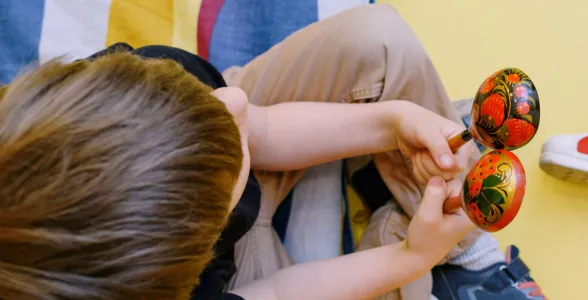
Use Your Voice: Music therapy and selective mutism
Music therapy can help people with selective mutism to use their voice - but perhaps not in the way you might expect! Within a safe therapeutic relationship and a client-led approach, we can build connection and communication with people who are sometimes unable to use their voice to speak.
People with selective mutism experience extremely high levels of anxiety when they feel pressure to speak to or in front of people outside of their safe communication partners (these are often family members but sometimes teachers and support staff in school for children who don’t feel safe in their home environment). They will have a normal ability to speak and use and understand language when they are feeling safe and able to show their whole selves. Despite the name ‘selective’, it is not a choice as the person feels physically unable to vocalise and goes into a freeze response. Some people prefer the term ‘situational mutism’ instead for this reason. There is a very high crossover between selective mutism and autism, and many people with selective mutism are autistic and experience other sensory and social challenges in a neurotypical world.
Music therapy can help people with selective mutism to connect and communicate with a Music Therapist through musical and non-verbal means. Although many people with selective mutism become comfortable enough in music therapy sessions to speak to the therapist, our initial goal is not to ‘make someone talk’, but to provide a low pressure environment where the client can communicate however they feel comfortable and start to explore their feelings and identity through music. Sessions often take an improvisational and client-led approach, as instructing someone with selective mutism to do a specific task can lead to increased anxiety.
Our Music Therapist, Laura Cook, shares some insight into her work with clients with selective mutism:
I have recently been working with a client with selective mutism, and drew on my personal experience of having selective mutism myself as a young child. I rewrote the words to a song the client knew to describe the experience of not being able to speak and recorded a video for them of me singing the new version of the song. We also explored musical improvisation and using toys and characters to play the instruments and dance to music - these objects can help to reduce the feeling of pressure from direct communication. We even played dancing games on Roblox together during the sessions and communicated through the online chat!
Support our Work
Help us to provide Music Therapy to the most vulnerable and isolated members of our society
Donate here

.webp)


.png)